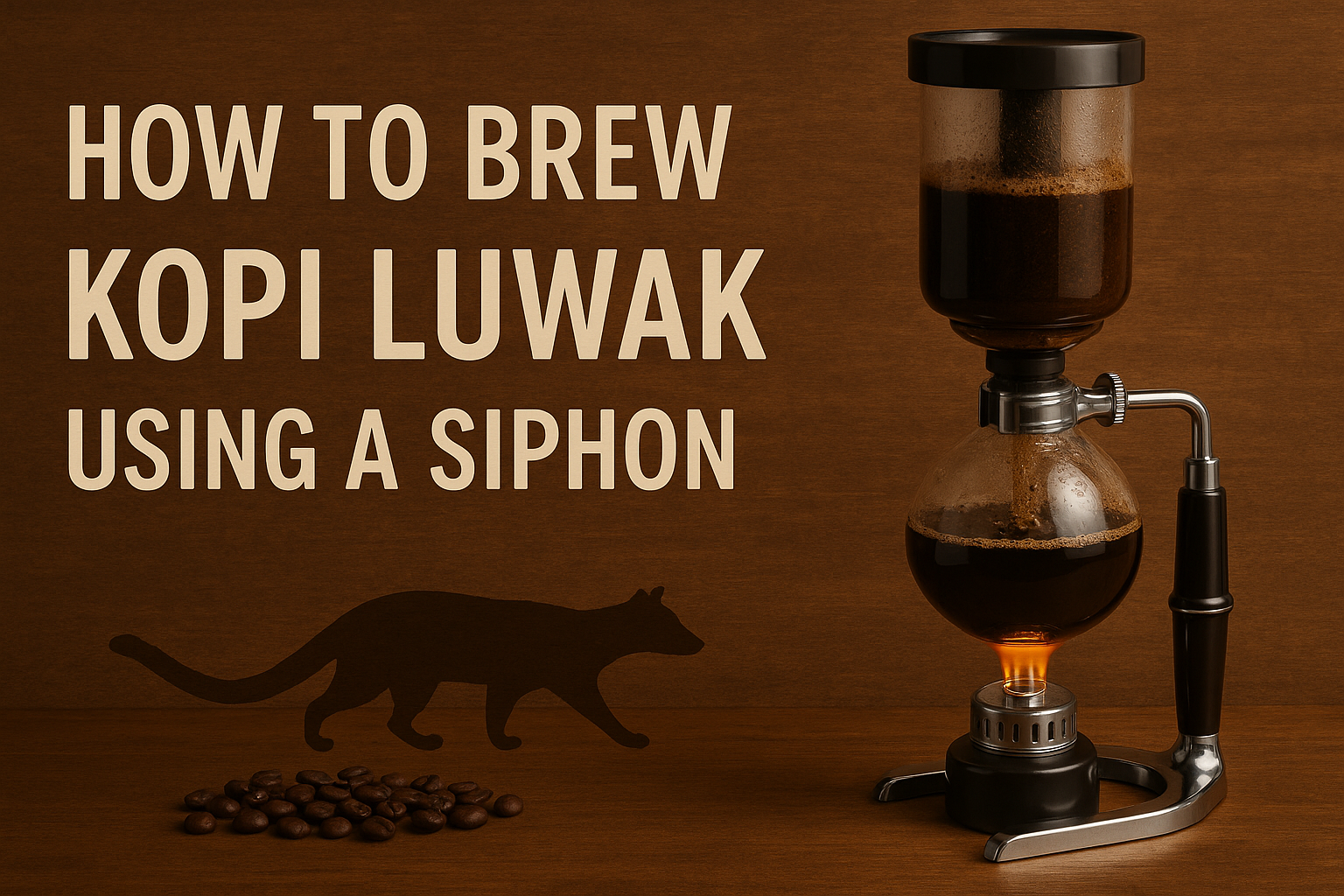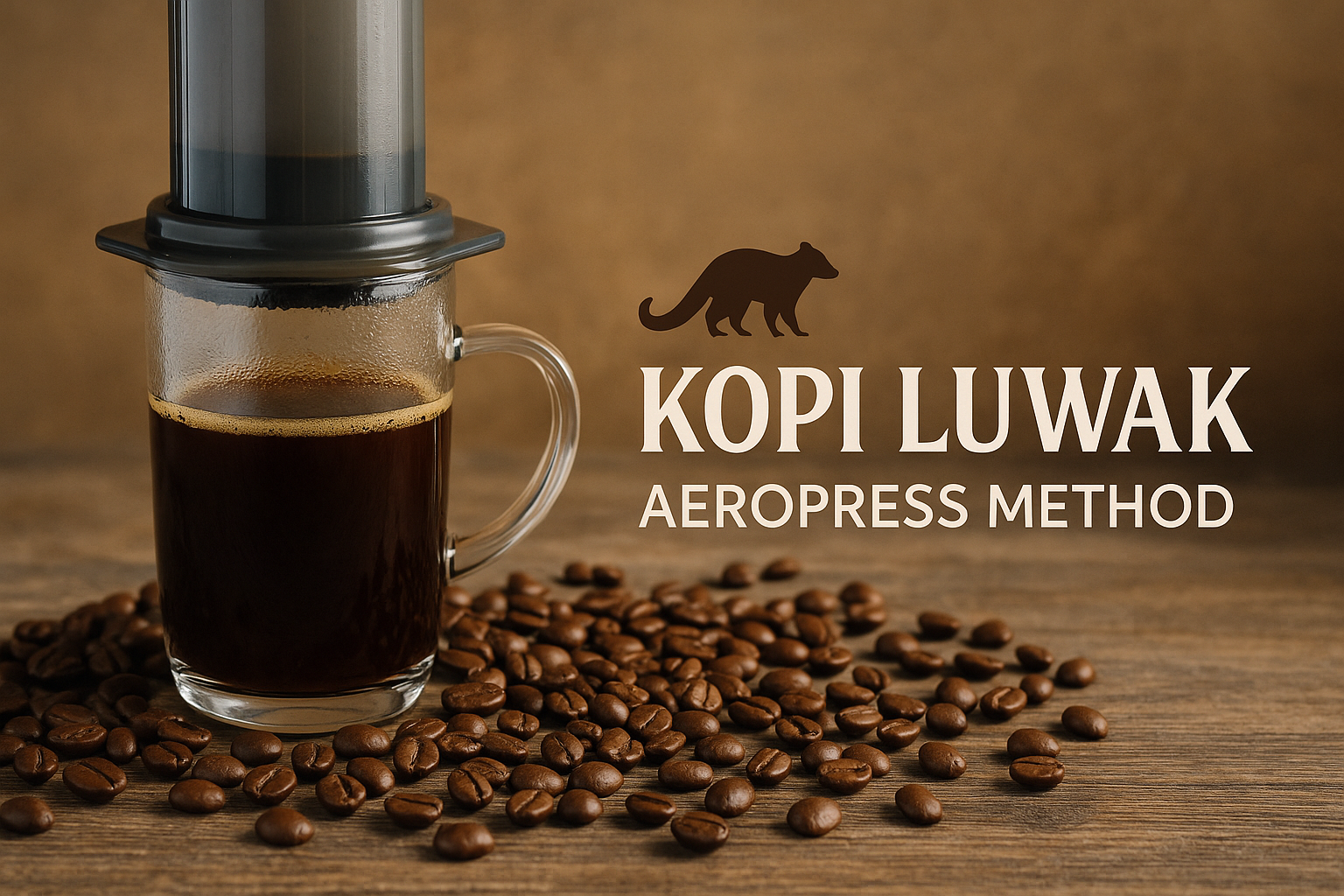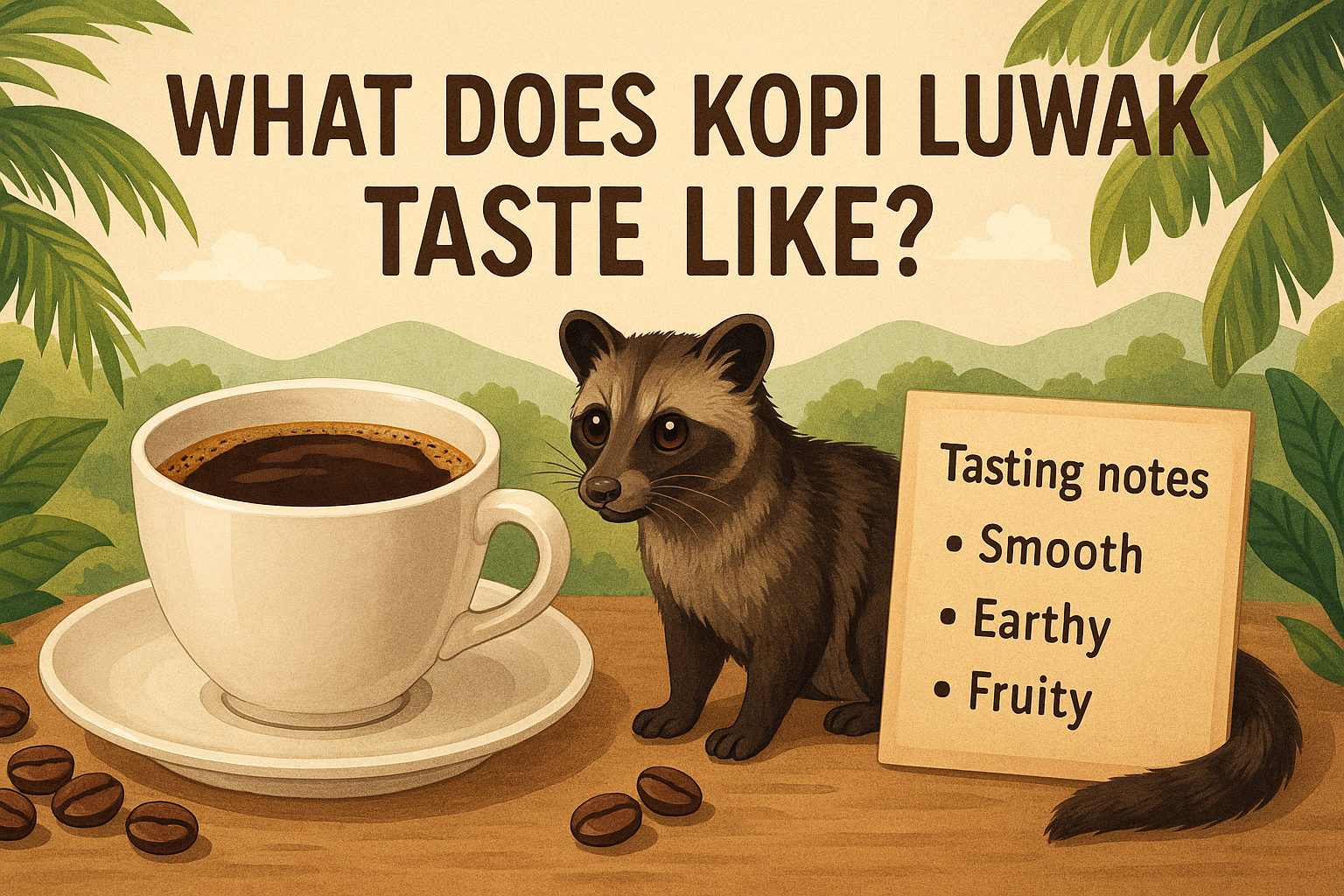Introduction: The Theater of Vacuum Brewing
My name is Marco, and my fascination with siphon brewing began twenty years ago in a tiny coffee shop in Kyoto, where I watched an elderly master perform what could only be described as coffee theater. The graceful dance of water rising through vapor pressure, the precise timing of heat adjustments, and the dramatic final descent—it was mesmerizing. When I later applied this method to Kopi Luwak, the results were nothing short of revolutionary.
The siphon method, also known as vacuum brewing, represents the pinnacle of coffee brewing elegance. For Kopi Luwak—already the world's most expensive coffee—this brewing method unlocks layers of complexity that remain hidden with conventional techniques. After fifteen years of perfecting this combination, I can confidently say that siphon brewing reveals Kopi Luwak's true potential like no other method.
Why Siphon for Kopi Luwak?
The siphon's vacuum extraction process creates an incredibly clean, complex cup that showcases Kopi Luwak's legendary smoothness while highlighting its subtle flavor notes. The controlled temperature and full immersion extraction preserve the delicate aromatics that justify this coffee's premium price.
Understanding Siphon Brewing: Science Meets Art
Before we dive into the specific techniques for Kopi Luwak, it's essential to understand how siphon brewing works. This method uses vapor pressure and vacuum to control the brewing process with scientific precision while offering the visual drama of traditional coffee ceremony.
The Science Behind Siphon Brewing
- Vapor Pressure: Heat creates pressure that forces water upward
- Full Immersion: Coffee and water mix completely for even extraction
- Temperature Control: Precise heat management throughout the process
- Vacuum Filtration: Gravity and vacuum create the final, clean extraction
- Visual Feedback: You can observe the entire brewing process
For Kopi Luwak, these scientific principles work together to create what I consider the ultimate expression of this extraordinary coffee. The full immersion extracts maximum flavor, while the controlled temperature preserves the delicate compounds created during the civet's unique digestive process.
Essential Equipment & Setup
Professional Siphon Setup
Required Equipment
- Siphon Coffee Maker: Hario Technica or Yama Glass preferred
- Burr Grinder: Commandante C40 or equivalent
- Precision Scale: 0.1g accuracy minimum
- Timer: Built into most digital scales
- Thermometer: Infrared or probe thermometer
- Heat Source: Halogen lamp or butane burner
- Bamboo Paddle: For gentle stirring
- Quality Filters: Cloth or paper filters
Pre-Brewing Preparation
- Equipment Inspection: Check all seals and connections
- Filter Preparation: Rinse cloth filter thoroughly
- Water Quality: Use filtered water with 150-200 TDS
- Bean Inspection: Verify Kopi Luwak authenticity
- Environment: Ensure stable, draft-free brewing area
Optimal Brewing Parameters for Kopi Luwak
Marco's Signature Siphon Recipe
The Golden Formula
- Coffee: 25g (medium grind, like coarse kosher salt)
- Water: 350g at 88°C (190°F)
- Brew Time: 3:30 total (including drawdown)
- Grind Size: Medium to medium-coarse
- Stir Count: 3 gentle stirs maximum
These parameters have been refined through hundreds of experiments with authentic Kopi Luwak. The slightly higher temperature than typical siphon brewing helps extract the unique compounds created during the civet's digestive process, while the medium grind ensures proper extraction without over-extraction.
Complete Step-by-Step Brewing Process
The Master's Technique
1Preparation & Setup (0:00-2:00)
Assemble your siphon and ensure all seals are tight. Insert the filter into the upper chamber and pull the chain down to secure it. Add 350g of 88°C water to the bottom chamber. The water temperature is crucial—too hot and you'll over-extract the delicate Kopi Luwak compounds.
2Heat Application & Water Rise (2:00-4:30)
Apply heat to the bottom chamber and attach the upper chamber when water begins to bubble. Water should rise within 2-3 minutes. If it takes longer, increase heat slightly. The dramatic rise of water is one of siphon brewing's most captivating moments.
3Coffee Addition & First Stir (4:30-4:45)
Once all water has risen, reduce heat to maintain gentle bubbling. Add 25g of medium-ground Kopi Luwak in one swift motion. Perform one gentle stir with the bamboo paddle to ensure even saturation. The aroma released should be intensely chocolatey with tropical fruit notes.
4Immersion Brewing (4:45-6:45)
Allow the coffee to brew for exactly 2 minutes. Maintain gentle heat to keep water from dropping prematurely. The coffee should form a thick crust on top—this is normal and desirable for proper extraction.
5Final Stir & Heat Removal (6:45-7:00)
Give one final gentle stir to break the crust, then immediately remove heat. The coffee should begin its dramatic descent within 30-45 seconds. This timing is critical for achieving the perfect extraction.
6Vacuum Extraction (7:00-8:30)
Watch as the vacuum pulls the coffee through the filter. The drawdown should take 60-90 seconds. If it's too fast, your grind is too coarse; if too slow, it's too fine. The final dome of grounds should be relatively flat with minimal tunneling.
Advanced Siphon Techniques
Temperature Profiling
Master siphon brewers understand that temperature control throughout the process is what separates good coffee from extraordinary coffee:
Temperature Management
- Water Rise: High heat for quick vapor pressure
- Coffee Addition: Reduce to medium heat
- Brewing Phase: Low heat to maintain gentle bubbling
- Pre-Drawdown: Remove heat completely
Stirring Techniques
Professional Stirring Methods
- Initial Stir: Gentle figure-8 motion to saturate grounds
- Crust Break: Single straight line through center
- Emergency Stir: If drawdown stalls, one gentle circular motion
Troubleshooting Common Issues
Common Problems and Solutions
Water Won't Rise
- Cause: Poor seal, insufficient heat, or wrong water temperature
- Solution: Check all connections, increase heat, ensure water is at 88°C
Slow or Stalled Drawdown
- Cause: Grind too fine, clogged filter, or over-stirring
- Solution: Coarsen grind slightly, clean filter, reduce stirring
Bitter or Over-Extracted
- Cause: Water too hot, over-brewing, or too much agitation
- Solution: Reduce temperature by 2°C, shorten brew time, minimal stirring
Safety Reminders
Always handle hot glass carefully, ensure stable setup, and never force water circulation. The siphon contains hot water under pressure—respect the equipment and process.
Tasting & Evaluation
Expected Flavor Profile
When brewed correctly using this siphon method, Kopi Luwak should present a complexity and cleanliness that justifies its premium price:
Siphon-Brewed Kopi Luwak Characteristics
- Aroma: Intense chocolate and caramel with floral undertones
- Body: Full and syrupy, yet remarkably clean
- Acidity: Bright but balanced, highlighting fruit notes
- Finish: Long, sweet, with lingering cocoa notes
- Clarity: Crystal clear with no sediment
The siphon's full immersion and vacuum filtration create a cup that's both intensely flavorful and incredibly clean. You should taste layers of complexity that unfold as the coffee cools, revealing why this brewing method pairs so perfectly with Kopi Luwak.
Conclusion: The Art of Patience
Siphon brewing Kopi Luwak is not just about making coffee—it's about creating an experience. The theatrical presentation, the precise timing, the careful temperature control—all of these elements come together to create something far greater than the sum of its parts. After two decades of coffee exploration, this remains one of my most cherished brewing rituals.
The investment in both time and equipment for siphon brewing is significant, but when applied to the world's most expensive coffee, the results justify every effort. You're not just brewing a cup of coffee; you're unlocking the full potential of beans that have undergone one of nature's most unique processing methods.
Final Wisdom
Master the technique with high-quality but less expensive beans first. The siphon method requires patience, practice, and attention to detail. Once you've perfected your technique, the application to Kopi Luwak will create coffee experiences that border on the transcendent. Remember: great coffee is about respect—for the bean, the process, and the moment.
I encourage you to approach siphon brewing with the reverence it deserves. Take time to appreciate not just the final cup, but the entire journey. In our fast-paced world, the deliberate pace of siphon brewing offers a meditation on quality over convenience—a philosophy that Kopi Luwak embodies perfectly.
May your brewing bring you both exceptional coffee and moments of peaceful contemplation.



